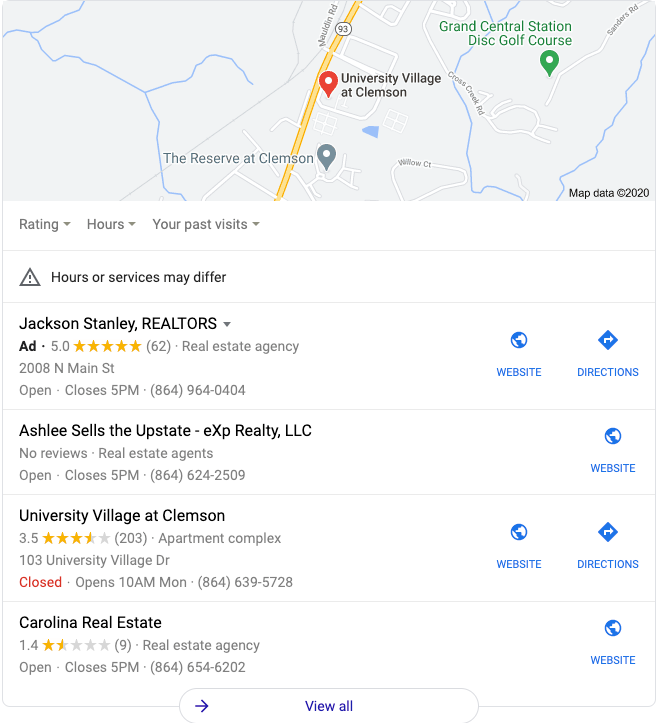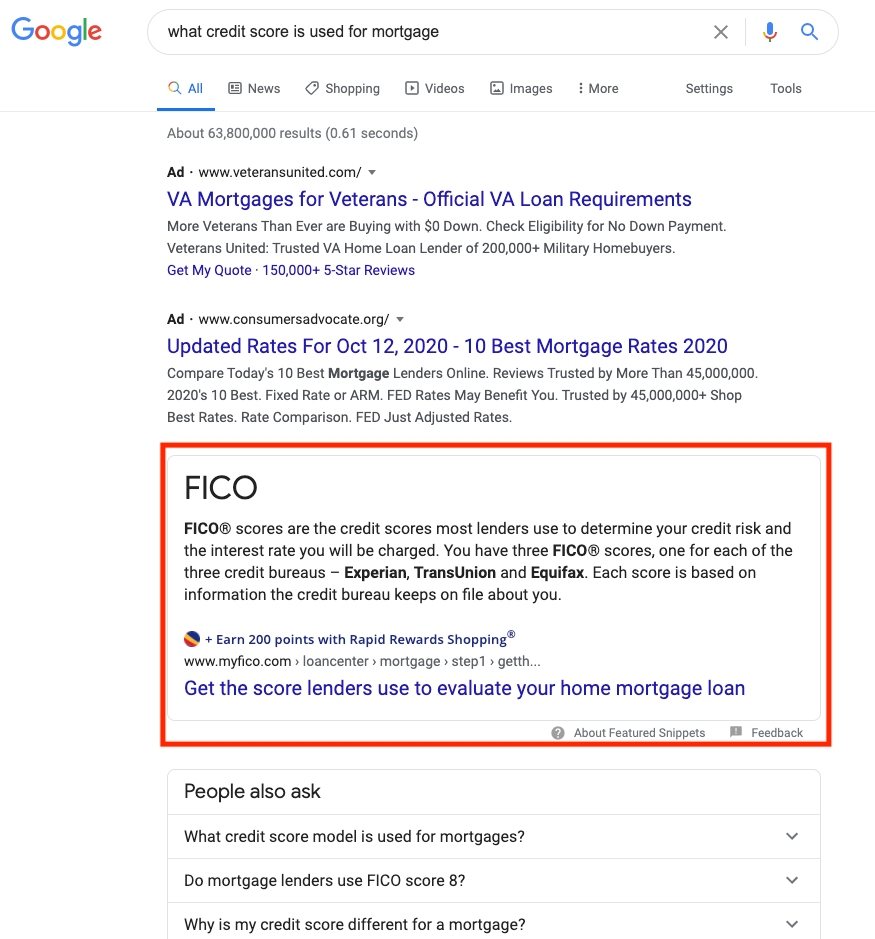
In the real estate niche, a fierce competition is prevalent. Use these ten ideas to assist you to establish a solid Real Estate SEO foundation and dominating local search.
A real estate agency is a competitive business, especially in large cities.
From the solopreneur competing for a living to large multinational corporations, everyone is working hard to improve their exposure and get those real estate listings.
Fortunately, for you, online real estate agent competition isn’t as fierce as it is offline.
Since you serve a small region, you’re only competing with individuals from the same hyperlocal space.
Of course, the competition may be more intense, even among tiny companies, depending on location.
But, with local SEO, you have a fighting chance. As long as you know what you’re doing.
The following are ten strategies for enhancing your real estate website so that it can dominate local search.
Table of Contents
1. Start with an SEO Audit

Before you can figure out where you’re going, you must first know where you are.
An SEO audit helps to determine which pages are doing well and where you can make improvements.
Performing a review might be time-consuming, but it serves as a yardstick for your advancement and gives you the data you need to construct a real estate SEO strategy.
- Does your site rank locally?
- Are you getting any organic traffic?
- Are you generating leads or converting clients?
If you don’t know the answer to any of these questions, there’s a reason for it. The SEO audit can assist you in determining why your site isn’t ranking higher.
Key areas to focus on include:
- Site Structure: XML sitemap, robots.txt, redirects.
- Page Structure: Titles, meta descriptions, heading tags, alt tags, URLs.
- Content: Structure, keyword and link placement, visual elements, duplicates, redirects, and canonical tags.
- Links: Outbound and inbound links, interlinking with other pages on your site, broken links.
- Usability: Accessibility, mobile-friendliness, site speed.
When you make improvements in these five areas, expect an increase in your organic traffic.
Use Google Analytics to see which pages need the most attention, and use the Google Search Console to find issues that need to be fixed.
There, you’ll also find the Mobile-Friendly Test tool and PageSpeed Insights tool.
If you need help keeping track of all the things you need to do as part of your audit, take a look at this SEO audit checklist created by Search Engine Journal.
2. Optimize for Search
Create a strategy to address each of the concerns based on your audit findings.
To minimize errors, begin by taking a methodical approach. To ensure you don’t overlook anything, use a methodical approach.
Look for additional methods to increase your overall optimization after you’ve addressed the problem areas.
Focus on:
- Keyword research and analysis
- SEO-friendly URLs
- Optimization of titles and meta descriptions
- Image optimization
- Proper outbound and internal link placement
- Broken links
- Redirects
- Site speed optimization
- Content optimization
- CTR and bounce rate optimization
- Schema
- Robots.txt
- XML sitemap
- SSL certificate
- W3C validation
3. Make Sure Your Website Is Accessible

Everyone, regardless of disability, deserves to have internet access that is simple.
Assistive technology, such as screen readers, aids the blind and visually impaired. However, if a website isn’t designed with accessibility in mind, it suffers from a negative user experience.
When most people think of the Americans with Disabilities Act, they don’t consider how it applies to internet media, since the legislation was written before widespread internet access.
Businesses must ensure that their websites are ADA compliant, but this is particularly true for real estate since brokers are frequent litigation targets.
Basic guidelines for ADA compliance include:
- Any media players or PDF documents should have a link to where you may obtain the required software.
- Users must be notified if incorrect data is provided. For example, if a form needs an email address but the consumer fails to supply one, they must be informed.
- The website’s appearance doesn’t rely solely on color.
- Buttons and links are clearly named.
- To make sure users can quickly find the information, implement a “skip navigation” option.
- Images must include alternative text to assist screen readers.
- Video content needs to have text captions.
- Audio and video content need transcripts or descriptions.
- Any audio that plays can be stopped immediately.
- Page titles should describe the page content and not mislead users.
- Users are notified of any time limits.
- The site contains no empty links or heading tags.
- “Em” and “strong” are used instead of “b” and “i” tags.
- Headings appear in a logical order.
- Users can use their keyboards to navigate the site.
- Every page has language code in the header to identify the language the code is written in and should be read in.
- Forms have both labels and legends readable by screen reader software.
- Any automatic blinking, flashing, or scrolling can be disabled.
- No strobe effects or rapidly flashing animations or color are present.
- There are no significant interactions on the page.
- Any keyboard focus should not lock on any specific element.
- The site passes W3C HTML validation without major errors.
To be fully ADA compliant, you must also ensure:
- There are multiple ways to access the site’s pages.
- When the window is resized to 200%, the text should remain in form without affecting the page layout or usability.
- Menu and button order and presentation should remain consistent across the entire site.
- Any live audio or video content should have text captions.
- Images do not replace functions that can be achieved by text.
- Only links are underlined.
- Redundant links on the same page are eliminated or at least reduced.
- The keyboard focus needs to be highly visible and clear all the time.
- If the user encounters any input errors, suggestions to fix the issue are provided.
- The contrast ratio between background elements and readable elements needs to be at least 4:5:1.
- If the site uses multiple languages, the languages should be identified in the code of each page.
4. Optimize for Mobile Devices
Mobile devices account for more than half of worldwide internet traffic (52%).
Because of this, if you want to keep Google and your potential customers pleased, your website must function well on smartphones and tablets.
When it comes to mobile optimization, the key areas to focus on are:
- Responsive design
- Page speed
- Hosting speed
- Homepage
- Site navigation
- Site search
- Forms
- Conversions
- Usability
Because the mobile-first approach focuses on designing for all devices, your site will be more responsive and adaptive. This ensures that your site is as usable as possible; it adapts to any device’s screen automatically.
The importance of fast page speed cannot be overstated: if users have to wait too long, they are likely to click back to the search results in order to locate a more user-friendly website.
As a general rule of thumb, things should be as straightforward as possible.
The more a user has to go through in order to achieve their objective, the less likely they are to follow through to the conclusion.
The Mobile-Friendly Test tool will assist you in determining whether your current website successfully passed the test and delivered you with a list of concerns that you must address.
It’s time to run at top speed! minify your code and optimize your photos, and you’ll be done in no time. Use emulators to see how your material looks on a variety of devices.
5. Add Your Site to Google My Business & Other Relevant Directories

Local citations are a crucial aspect of local SEO.
The more locations where you have your site listed with the same name, address, and phone number across them, the better.
Start with Google My Business, and keep your profile up to date.
Complete as much of the profile as you possibly can.
Spice it up with photos, videos, and other relevant content.
These links may help you rank higher in Google local searches, as well as improve the likelihood of ranking better than sites like Zillow and Trulia.
Other directory websites to list your business on are:
- Realtor.com
- Yahoo Homes
- RedFin
- HomeSnap
- Neighborhood Scout
- Zoocasa
- Local.com
- Yelp
- Yellow Pages
- Manta
- Better Business Bureau
- Merchant Circle
- Angie’s List
- CitySearch
- Yellow Pages
- Whitepages
Do a quick search on each of the platforms you’re considering.
You may already have a business profile there that just needs to be claimed.
You’ll have more control over what’s displayed when you’ve completed the process.
Because consumers do a lot of research on these platforms, you may not only improve your SEO but also develop extra sales channels to boost lead creation.
6. Get Social
Although social media will not have an immediate impact on your search engine rankings, it is still an essential element of your digital marketing plan.
Why?
It helps to:
- Connect with your targeted audience.
- Increase exposure.
- Build authority, trust, and awareness.
- Drive more traffic to your website.
- Drive conversions.
Without social media accounts, real estate companies will have a difficult time gaining online exposure.
It’s tempting to try to be everywhere on social media, but it’s better to focus on a few platforms and do them well than to spread yourself so thin that your substance quality suffers.
Consider Instagram, Twitter, and Pinterest while using Facebook.
Share your blog material, videos, and other vital information such as statistics, news, and more on these social media platforms.
Use Instagram and Pinterest to promote your website with pictures.
On Facebook, highlight the greatest sales opportunities.
Whenever you post anything on social media, include local-targeted hashtags and descriptions with geo-specific keywords.
7. Publish Useful Content on Your Blog
You may use your blog to target relevant keywords more effectively if you have one.
As a small company, you don’t have the financial means to compete against huge businesses, which is why choosing what content will be included is so crucial.
Your blog should be a mix of:
Informative Articles
These are the posts about your neighborhood, such as:
- Walkability.
- Cost of living.
- Social life.
- Schools.
- Crime.
- Restaurants.
Describe the pros and cons of the neighborhood and provide unique perspectives.
Visual Content
This can include:
- Images.
- Video tours.
- Virtual tours.
- Live stream videos.
- Infographics.
Interviews with Local Business Owners
It may take some time to conduct interviews with local business owners, but it will be worth it.
Interviews with your neighbors provide a unique viewpoint on your neighborhood and show potential house purchasers how beautiful it is.
Business owners are likely to share these interviews on their social media sites and websites in order to raise awareness and expand your reach.
Before posting the content and sharing it, take a few minutes to optimize it for search engines.
Include the relevant geographic keywords in titles, headings and subheadings, meta descriptions, alt text, hashtags, and URLs.
8. Create Video Content
Video content is frequently the most simple to create, but if you can, you should invest in video production and optimization.
It can help you distinguish yourself from the competition.
Consider:
- Launching and optimizing a YouTube channel.
- Consistently upload videos to that channel.
- Share or upload your videos to your website and social media pages.
- Run live streams on Facebook and YouTube to build a larger audience.
Need ideas for content you can create?
Try:
- Open house videos.
- Listings videos (10 Best Homes for Families).
- Q&A live-streams.
- Q&A Videos.
- Virtual tours.
You may repurpose that video material to produce other content for social media and your blog so it can be used in as many ways as possible.
Spend some time optimizing your video content for local search.
Keywords in headlines, descriptions, and hashtags are all related to your geo-targeted keywords.
Add subtitles and a transcript for accessibility.
If you include the transcript in the description, it makes it simpler for search engines to crawl and index your material.
Include links to your social media profiles, website, and any related listings in the description as well.
9. Use Structured Data Markup
The schema, or structured data markup, aids Google and other search engines in understanding the nature of your content.
If your site contains rich snippets in search, you should place it where appropriate.
Real estate businesses can benefit from:
- RealEstateAgent
- Offer
- Product
- Place
- RentAction
- Residence
- PostalAddress
- SearchResultsPage
- WebPage
What you’ll use depends on your site structure.
If you’re unsure of what to use or where to start, consult with an SEO professional.
Once you’ve added schema to your site, check it for accuracy with the Structured Data Testing Tool.
10. Try to Earn Featured Snippets

Want to be featured at the top of the SERPs?
Featured snippets can be a game changer.
Grabbing a featured snippet can:
- Increases traffic.
- Attract users interested in your offers.
- Improves your search ranking.
- Increase conversion rates.
It’s difficult to acquire them, and only a few businesses have them in local search.
Instead of competing with big websites that may have already taken the top spot, seek for phrases that don’t currently have an answer.
However, bear in mind that when you run a geotargeted search, Google does not display the highlighted snippet.
To compensate, you can:
- To identify relevant, geo-focused long-tail keywords and expressions, conduct a keyword analysis.
- Place these selected keywords in high-quality content.
- Ensure that you document your content appropriately. Use question-focused headers and subheads, shorter paragraphs that may be included in a featured snippet section, H1-H2 tags, tables, lists, charts, photos, and so on to structure and markup your material.
- On your site, establish a Q&A section. Answers that are more detailed and include images and bullet points are more likely to get highlighted as featured snippets.
Summary
Despite the fierce competition in real estate, there are still many possibilities.
Using these Search Engine Optimization tactics, you can dominate local search.
Investing in Search Engine Optimization or SEO with these strategies can help you rank well, even against the big names in the real estate industry.
If you’re not familiar with SEO, it’s best to consult with or hire a professional, to avoid making mistakes.



CONNECT WITH US!!